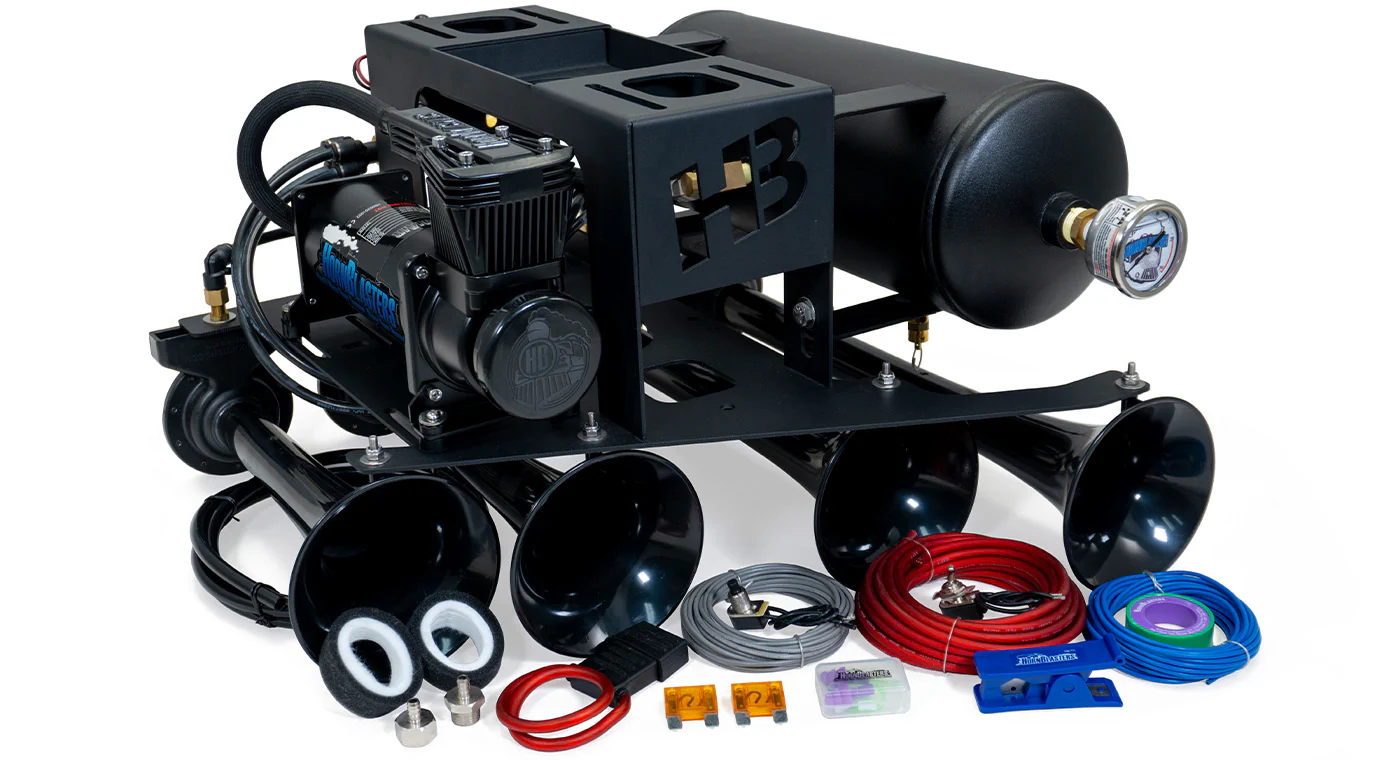TRUMPET (SLANG): WHY TRAIN HORN BELLS ARE CALLED TRUMPETS
The word “trumpet” usually brings to mind the iconic brass instrument found in orchestras and jazz bands, but the meaning goes further. In the world of air horns and train horns, a trumpet also refers to the individual bells that make up a multi-note horn system. This guide explains both the musical and horn-related uses of the term and breaks down how the slang developed, where it’s used, and why the word “trumpet” matters in vehicle culture.
WHAT IS A TRUMPET?
Overview and History
The trumpet’s story begins in ancient civilizations, where early versions of the instrument were made from animal horns, shells, or metal. These primitive trumpets were used for signaling during ceremonies, military campaigns, or religious rituals. Over centuries, the design became more refined, culminating in the modern trumpet, which emerged in the 19th century. Today, it is a key instrument in many genres, including jazz, classical, and marching band music.
Anatomy of a Musical Trumpet
A modern trumpet consists of three primary components:
-
Mouthpiece: Where the player blows air into the instrument, shaping the tone and sound quality.
-
Valves: Three or sometimes four valves that redirect air through additional tubing to change the pitch.
-
Bell: The flared end that amplifies and projects the sound outward. Each part plays a critical role in producing the vibrant and dynamic sound that the trumpet is known for.
How Trumpets Work
The sound of a trumpet is created when the player vibrates their lips into the mouthpiece. This vibration creates sound waves that travel through the tubing of the instrument. Pressing the valves lengthens or shortens the air path, allowing the player to change pitch and create a wide range of notes.
Uses of the Trumpet in Music
The trumpet is celebrated across genres for its bold and expressive sound. It has a rich history in classical music, where it often carries heroic and triumphant melodies. In jazz, iconic players like Louis Armstrong and Miles Davis revolutionized the instrument, making it synonymous with improvisation and innovation. Marching bands and orchestras also rely on the trumpet for its ability to cut through the ensemble with clarity and precision.
Trumpet Slang
The trumpet world comes with its own vibrant slang, reflecting the camaraderie and culture of musicians. Here are some key terms:
-
"Chops": Refers to a player’s lip muscles (embouchure). Strong chops allow for better control and endurance.
-
"Lead": The lead player in a jazz ensemble who handles melodies and solos.
-
"Woodshedding": Intense practice sessions to improve skills.
-
"Horn": A casual term often used interchangeably with trumpet.
-
"Gig": A performance or musical job.
-
"Cutter": A challenging musical piece.
-
"Chops-buster": A particularly demanding piece that tests a player’s endurance.
-
"Cat": A term of respect used among musicians, especially in jazz.
Trumpets in Horn Culture
Outside of music, the word “trumpet” also has a place in the world of air horns and train horns. In this context, a trumpet refers to each individual bell that produces a single tone. These trumpets are combined in multi note setups to create the loud, powerful chords heard in train horns and vehicle air horn systems.
For example, the Nathan Airchime K5 includes five separate trumpets, each tuned to a different note. The Shocker XL train horns have four trumpets designed to recreate the sound of a real locomotive. These individual horns are often mounted in different locations depending on the vehicle and are powered by an onboard air system.
In truck and car culture, the term “trumpet” is sometimes used more casually to describe the full horn system. You might hear someone say “hit the trumpet” or “fire the trumpet” when referring to honking a loud aftermarket horn.
This crossover in terminology shows how the word “trumpet” has evolved beyond its musical roots to describe one of the loudest and most attention grabbing tools used on the road.
DIFFERENCES BETWEEN MUSICAL TRUMPETS & TRUMPETS IN AIR HORNS/TRAIN HORNS
Purpose
Musical trumpets are made for playing melodies and creating expression in music. Trumpets in air horns and train horns are built for a different goal — producing loud, unmistakable sound signals for attention, safety, or communication.
Terminology
In the world of air horns and train horns, each individual horn bell is called a trumpet. This isn’t just slang. It’s a technical term used in product design, install guides, and by horn manufacturers. While the word comes from music, the use in horn systems refers to the physical bells that produce specific notes.
Design Differences
-
Musical trumpets are handheld instruments with valves, a mouthpiece, and a flared bell. They are played by buzzing air through them.
-
Trumpets in horn systems are larger, made from metal or composite materials, and powered by compressed air. They’re often installed under vehicles, on boats, or in other systems and are usually part of a multi-horn setup.
Sound
-
A musical trumpet creates a wide range of controlled notes with smooth tone changes and dynamic expression.
-
Trumpets in horn systems are tuned to fixed notes and are meant to be loud and forceful. In a multi-trumpet train horn, each bell is tuned to a different note that combines to make a powerful chord.
Use Cases
-
Musical trumpets are used in bands, orchestras, jazz ensembles, and solo performances.
-
Trumpets in air horns are found on trucks, trains, emergency vehicles, and boats. They're used for signaling, warnings, or standing out in traffic.
ANSWERING THE MOST SEARCH QUESTIONS ABOUT TRUMPETS
What does “trumpet” mean in air horn culture?
In air horn and train horn systems, a trumpet refers to an individual horn bell that produces a specific note. These trumpets are combined in multi-note setups to create a louder, fuller tone, similar to a real locomotive.
Is “trumpet” just slang for loud vehicle horns?
Not exactly. While some people use “trumpet” casually to describe the full horn setup on a truck or car, the term also has a technical meaning. Each bell on a multi-note horn is officially called a trumpet in horn system terminology.
Why do train horns use multiple trumpets?
Each trumpet in a train horn is tuned to a different note. When sounded together, they create a powerful chord that grabs attention and mimics the sound of real trains. The number and tuning of the trumpets affect the overall tone and volume.
Can I mount trumpets separately on my vehicle?
Yes. Many horn kits, like the Shocker XL, include individual trumpets that can be mounted in different locations to fit your space and layout. This flexibility makes installation easier on cars, trucks, and SUVs.
How much does a musical trumpet cost?
Beginner models usually start around $200, while intermediate and professional trumpets can range from $500 to several thousand dollars depending on the brand and build quality.
How do you learn to play the trumpet?
Learning starts with developing control over your embouchure and breath. You’ll practice scales, songs, and technique using finger placement on the valves. Lessons, school programs, and online tutorials are all good starting points.
What is the range of a trumpet?
A standard B-flat trumpet covers about three octaves, from the F-sharp below middle C up to high C and beyond. Experienced players can extend that range even further with control and practice.
What is a good beginner trumpet?
Look for a student model with smooth valves and a comfortable mouthpiece. Trusted brands like Yamaha, Bach, and Jupiter offer reliable entry-level options.
How do you clean a trumpet?
Routine cleaning includes wiping the exterior, rinsing the mouthpiece, and oiling the valves. Deeper cleaning involves flushing the tubing and slides every few months to keep everything working properly.
CONCLUSION
The trumpet is more than just a musical instrument. It has a long history in music, known for its bold sound and strong presence in jazz, classical, and marching bands. But the word also has meaning far beyond the stage.
In the world of air horns and train horns, a trumpet is the individual bell that produces a single note. These trumpets are combined in multi-note systems to deliver loud, attention grabbing sound on the road, on the water, and anywhere powerful signaling is needed.
Understanding both uses of the word helps you appreciate how the term “trumpet” has evolved. Whether it’s heard in a melody or mounted under a truck, the trumpet remains a symbol of power, clarity, and impact.
POPULAR HORNS & HORN KITS
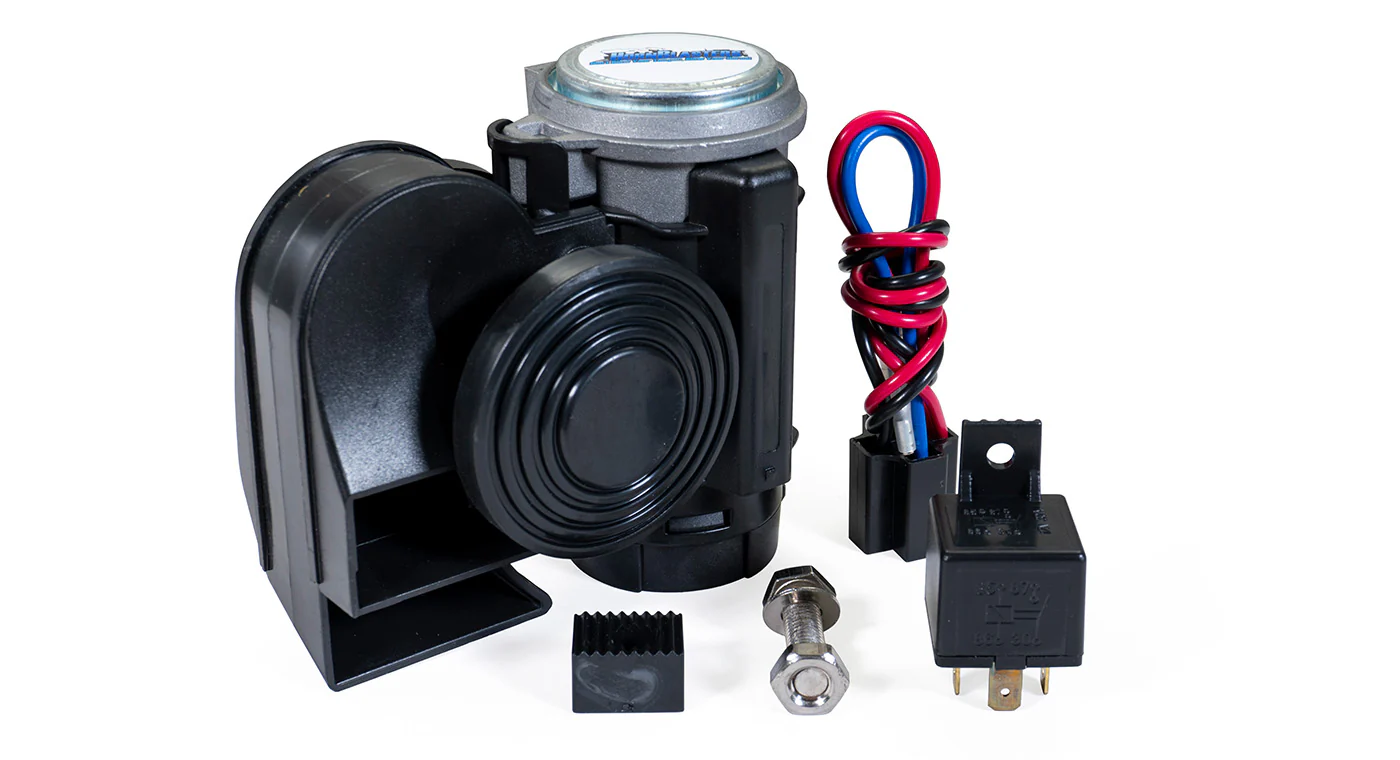
COMPACT ELECTRIC HORN
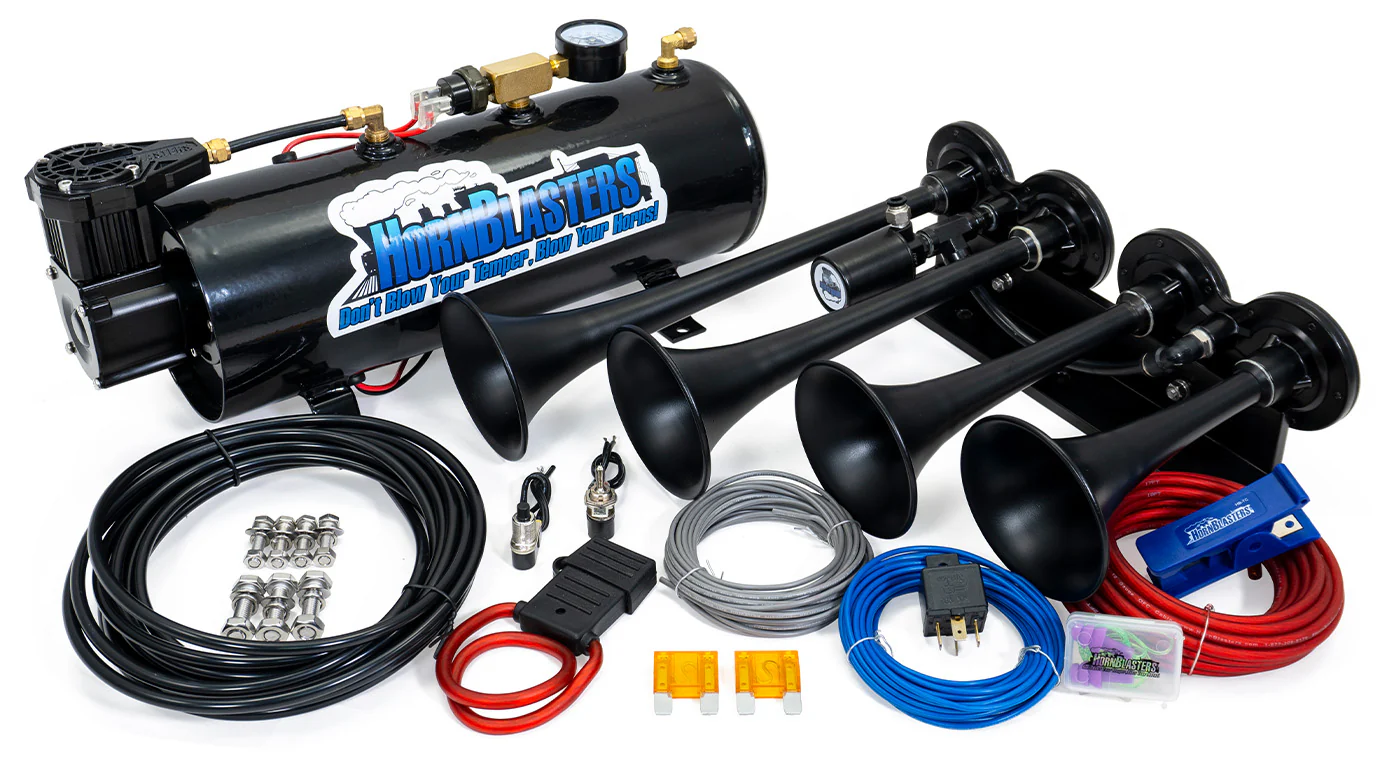
4-CHIME AIR HORN KIT

CONDUCTOR'S SPECIAL 228H
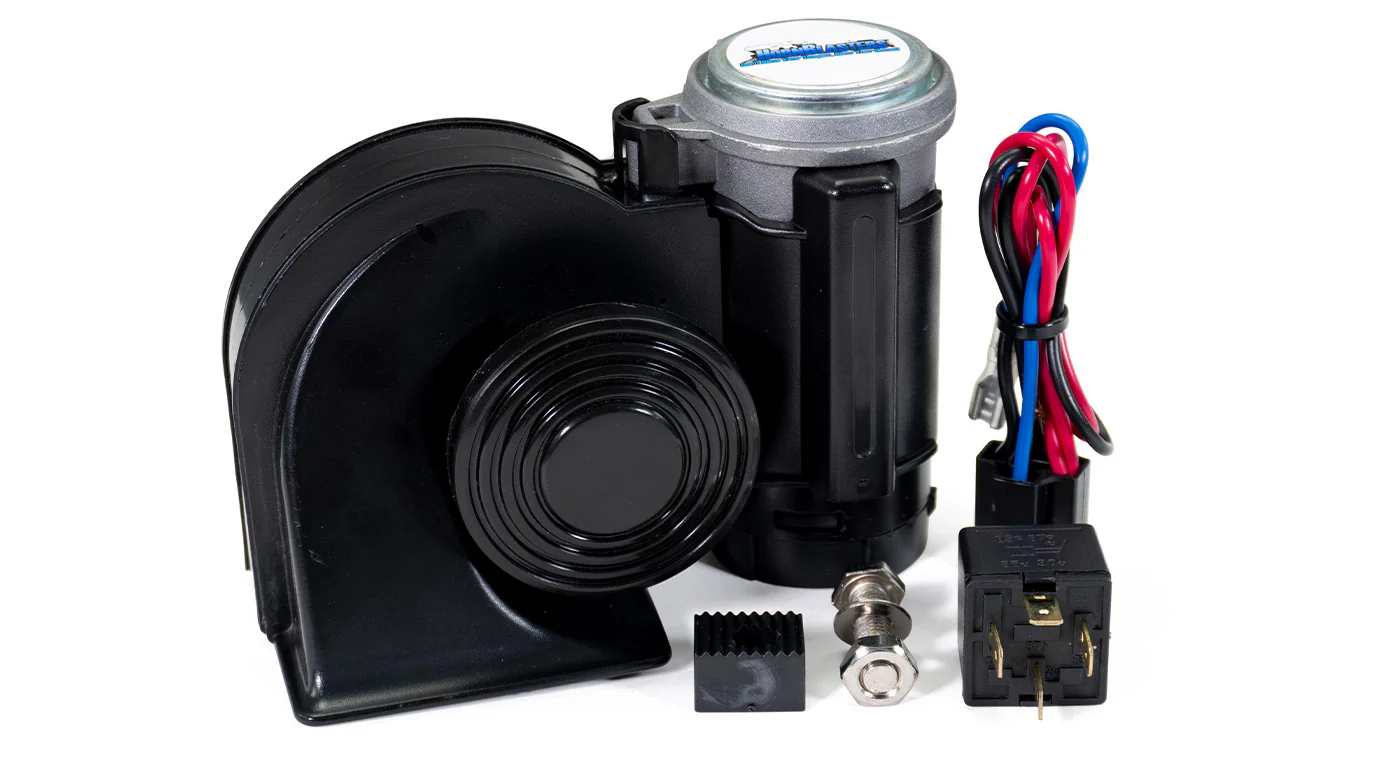
COMPACT TRUCK HORN
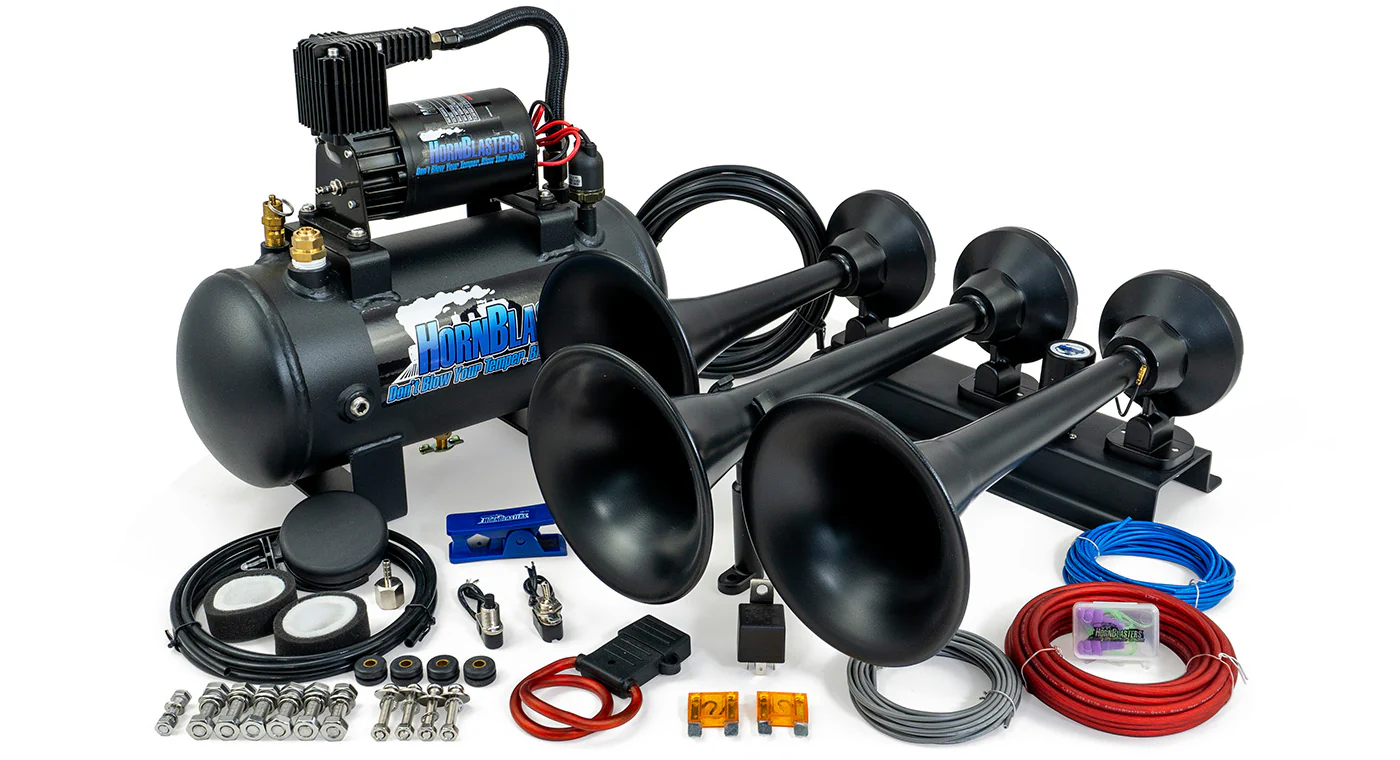
FLATLAW 127H HORN KIT
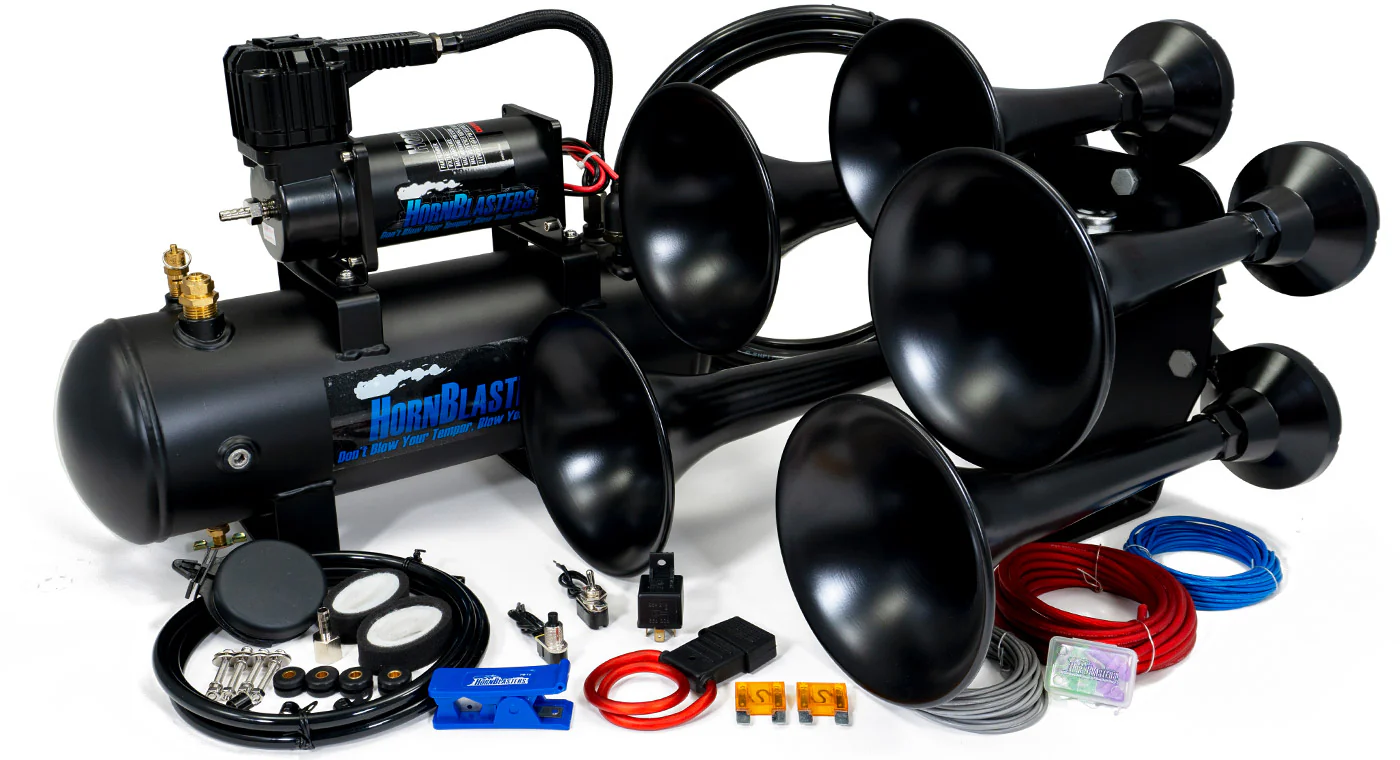
KATRINA 228H HORN KIT
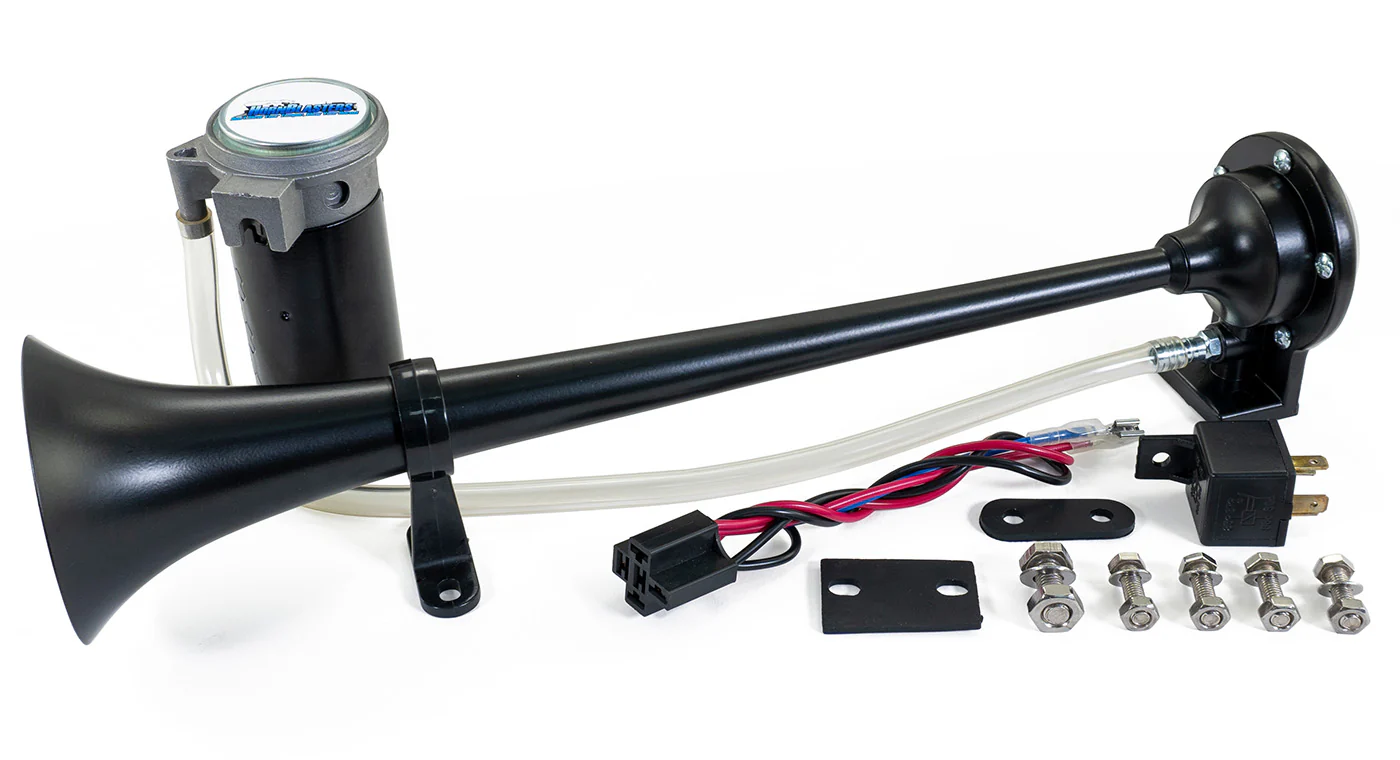
SNIPER HORN
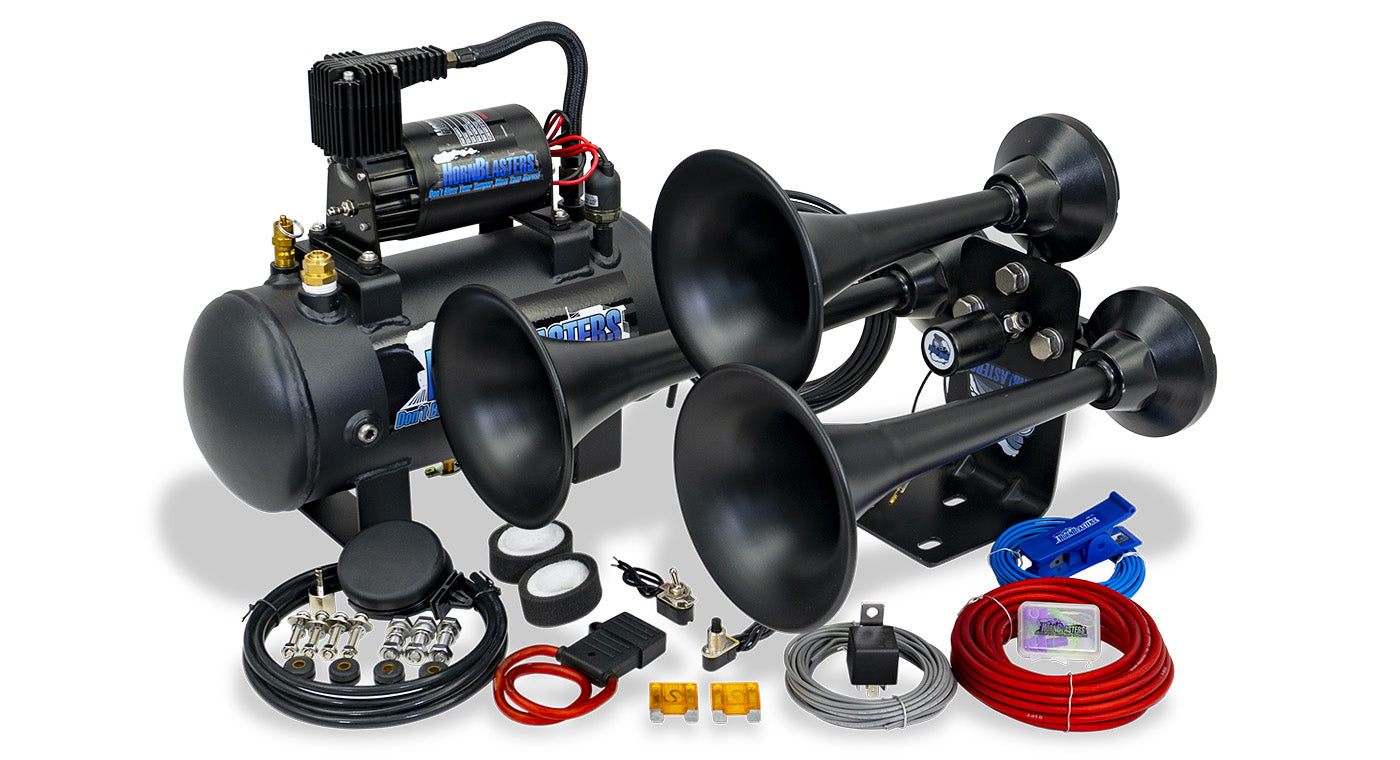
MINI OUTLAW 127H HORN KIT
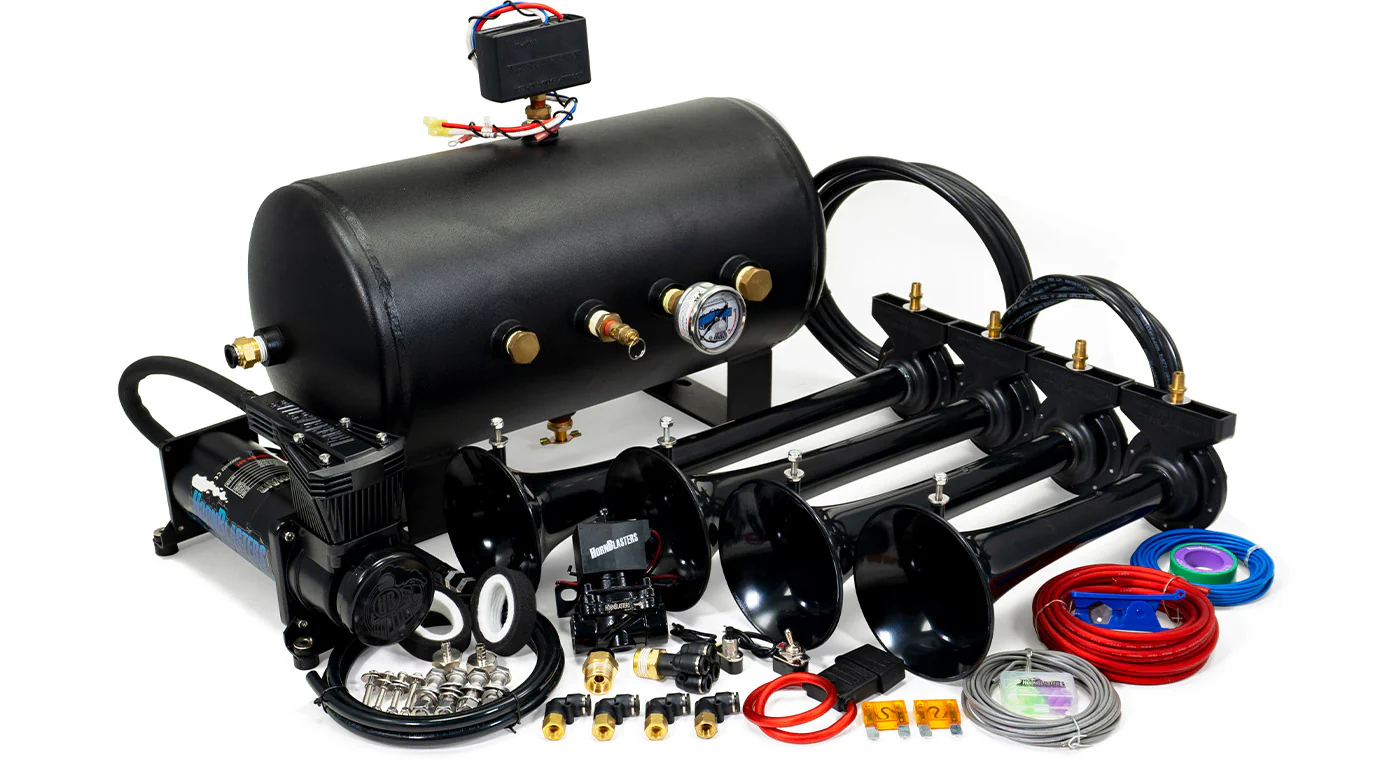
CONDUCTOR'S SPECIAL 544K

2-CHIME AIR HORN KIT

OUTLAW 228H HORN KIT
